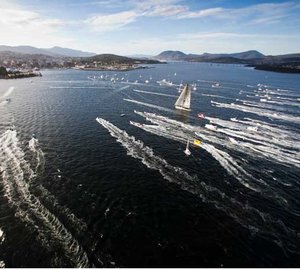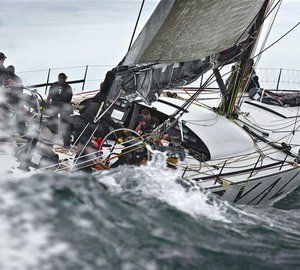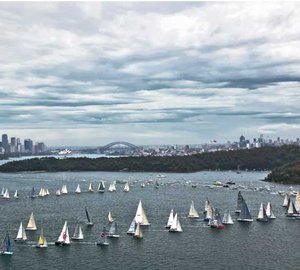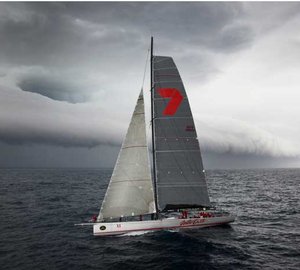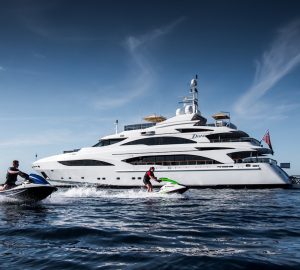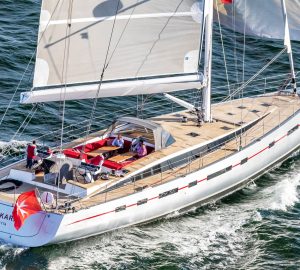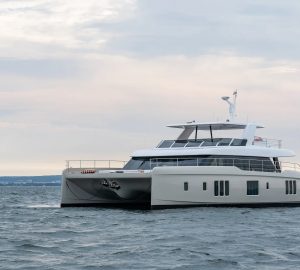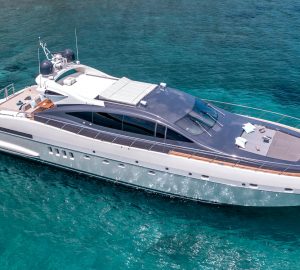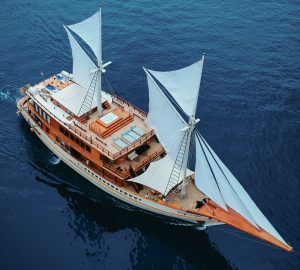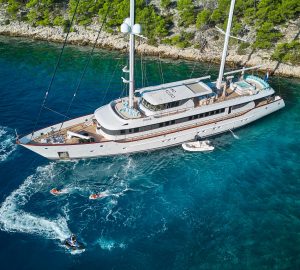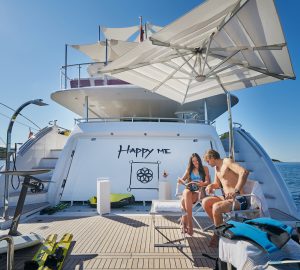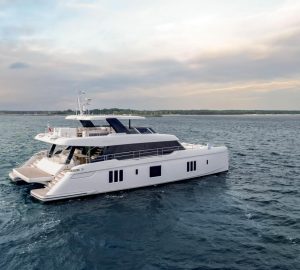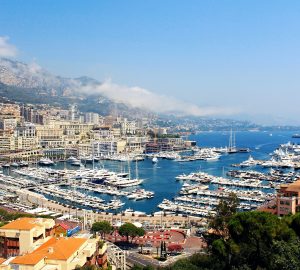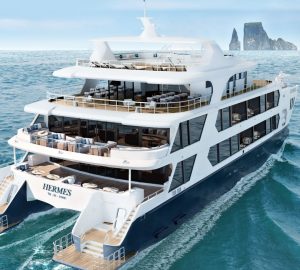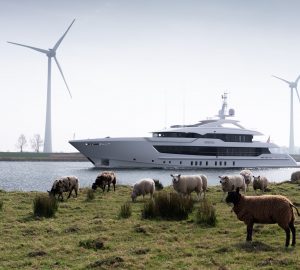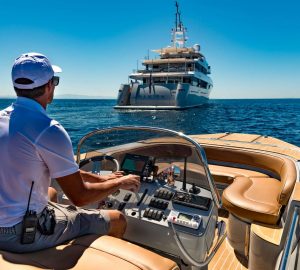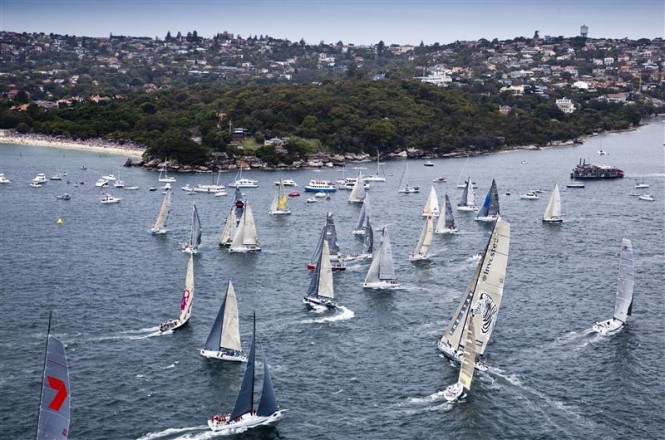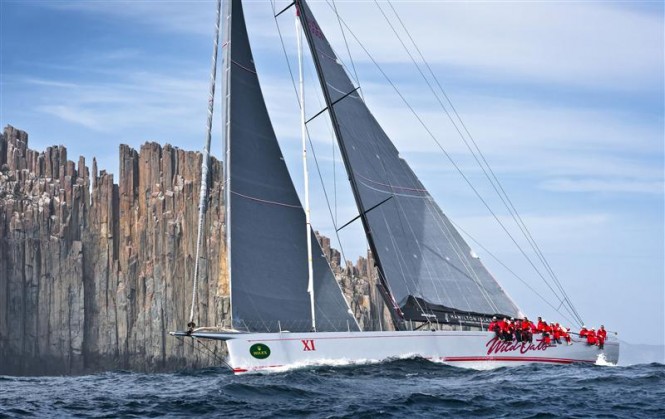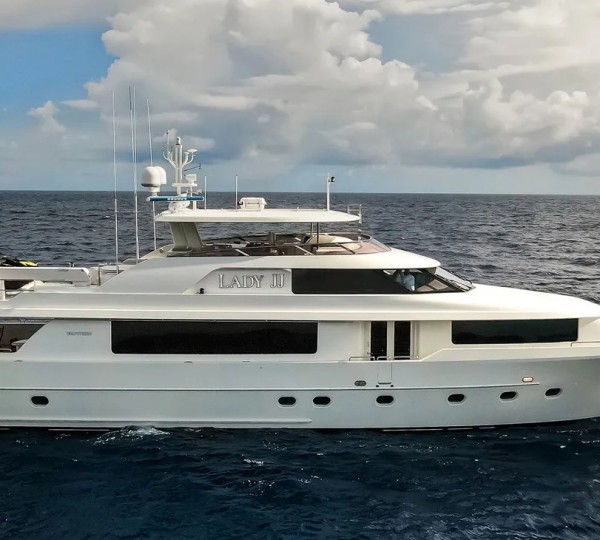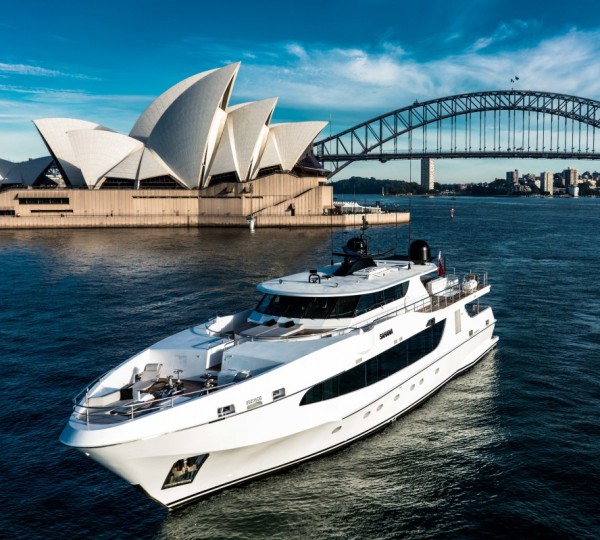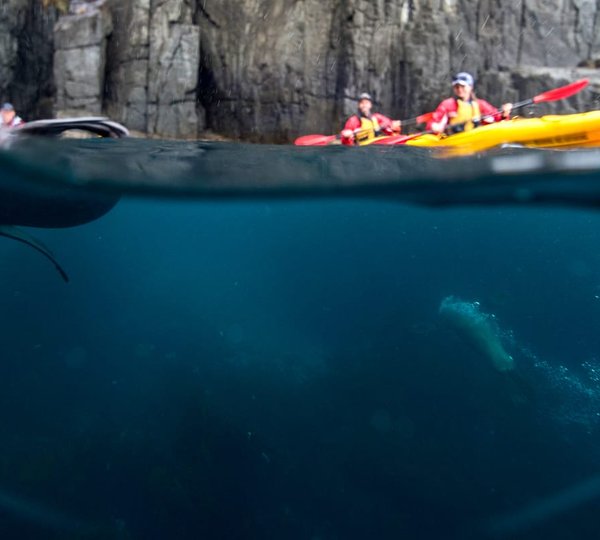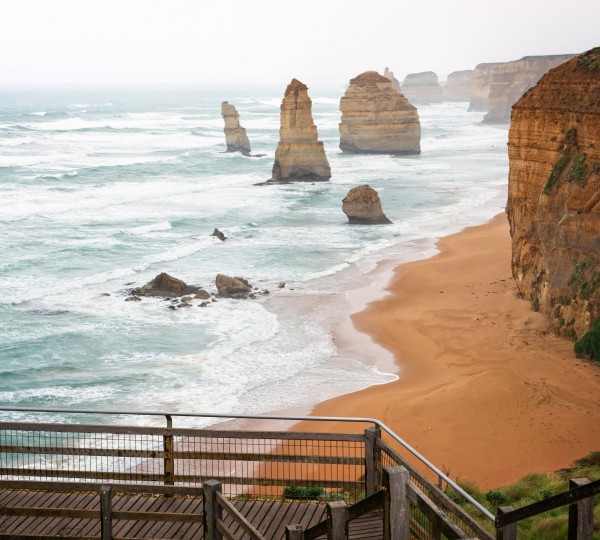The 2011 Rolex Sydney Hobart Yacht Race was notable thanks to its unexpected winner of the coveted line honours trophy, a worthy overall winner and a slow passage home for the smaller yachts.
The Boxing Day start of the 628 mile race south to Hobart was spectacular, with the 88-strong international fleet setting off from the heart of Sydney Harbour, with its iconic bridge and Opera House as a backdrop. The Heads and shoreline were teeming with spectators as news helicopters flew overhead. Leading the charge on the beat out of the Harbour was Bob Oatley’s maxi sailing yacht Wild Oats XI, the line honours winner in five out of the last six Rolex Sydney Hobarts.
Weather-wise the start of the race was fairly conventional with some fast running conditions for the afternoon, but with a dramatic 180 degree wind shift into the south forecast for the first evening. A swell from the north generated by the ex-tropical cyclone Fina, combined with this wind shift, created a horrific confused sea on the opening night, as the 30 knots southerly wind kicked in with a punch, gusting up to 40 knots. But it is these brutal, testing conditions competitors expect when they set out on the Rolex Sydney Hobart and give the event its reputation as one of the world’s toughest offshore yacht races.
For the crews it was a case of battening down hatches and muscling through and by the first morning there was an impressively low attrition rate with just two retirements. They were joined later by a third, the 2003 line honours winner Grant Wharington’s Wild Thing, suffering sail damage.
24 hours in and race favourite for line honours, the Mark Richards-skippered Wild Oats XI superyacht, was 11 miles ahead of Anthony Bell’s super maxi sailing yacht Investec Loyal, these two having broken away from Peter Millard’s Lahana with singlehanded round the world sailor Alex Thomson on Hugo Boss holding fourth on the water. On IRC handicap Roger Hickman, an old hand in the Rolex Sydney Hobart, competing in his 35th race, had pulled into the lead aboard his 1993 race winner, Wild Rose yacht.
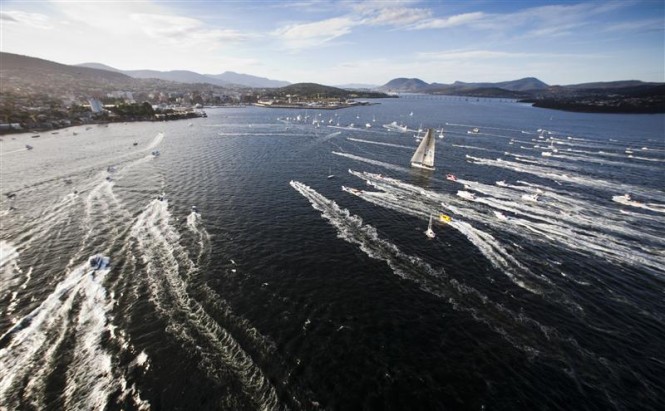
INVESTEC LOYAL Superyacht escorted by spectator craft before crossing the finish line Photo: ROLEX/D. Forster
For this Rolex Sydney Hobart Wild Oats XI had been ‘turboed’ with the addition of new twin daggerboards and a larger square-topped mainsail, but her dominance as the fastest boat in the race was called into question when at 20:00 on the second evening of the race she was overtaken by the similarly-sized, but older, Investec Loyal.
With the wind lightening and backing from the southwest into the southeast, so Wild Oats XI was caught in a wind hole. Her co-navigator, Ian Burns explained what happened: “They [Investec Loyal’s crew] were keeping track of how we were doing and the moment we stopped under a cloud with no wind under it, they basically sailed right around the outside of this large hole we were stuck in and came back above us. It was good work on their part.”
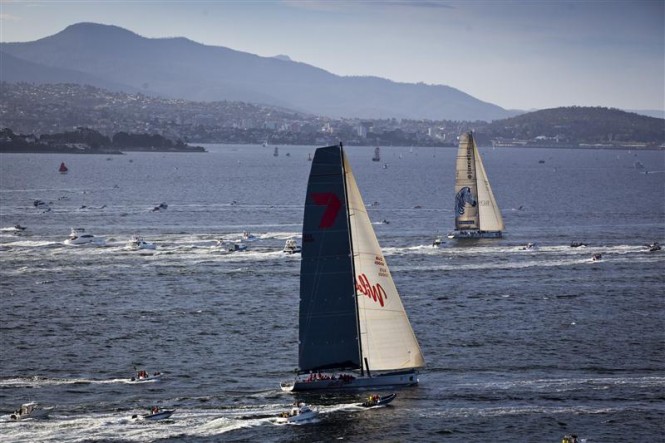
Super maxi sailing yachts INVESTEC LOYAL and WILD OATS XI close to the finish line on the Derwent River Photo: ROLEX/D. Forster
The theoretically faster super yacht Wild Oats XI managed to catch up and overtook Investec Loyal at 07:30 on the second morning of the race as the two boats were sailing down the east coast of Tasmania. For the rest of the morning followers of the race were on the edge of their seats as the two boats match raced around the remainder of the course.
As they rounded the south side of Tasman Island, so Wild Oats XI was becalmed again and, taking their chance, Investec Loyal once again pounced, sailed around the outside of them to regain the lead. Crossing Storm Bay and sailing up the Derwent River to the finish, the Wild Oats XI crew, sailing with many of Australian yachting’s elder statesmen and women on board, threw all they could at Investec Loyal, but it was not enough. Investec Loyal crossed the finish line at 19:14:18 local time, after 2 days 6 hours 14 minutes and 8 seconds at sea, just 3 minutes and 8 seconds ahead of Wild Oats XI. This was the fourth closest finish in the 67 year history of the Rolex Sydney Hobart.
Unfortunately celebrations were dampened when the line honours winner was protested by the race committee. This was over a conversation between Investec Loyal tactician Michael Coxon and a helicopter pilot on the first morning of the race in which Coxon enquired about whether the mainsail or the trysail was being used on board Wild Oats XI. Investec Loyal’s line honour victory was finally confirmed when, after a three hour long protest hearing, the International Jury concluded that Coxon, in his capacity as Managing Director of North Sails Australia, had made the enquiry about Wild Oats XI’s new 3Di mainsail for professional reasons and this in no way had benefitted Investec Loyal’s performance during the race.
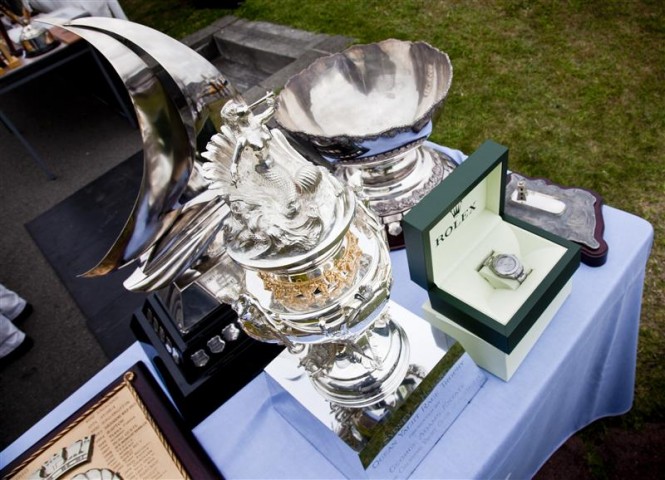
Tattersalls Cup and Yacht-Master timepiece for Overall Handicap winner and Line Honours winner Photo: ROLEX/D. Forster
“It was one of the great experiences in my life,” said Anthony Bell, yacht Investec Loyal’s owner and skipper of his win. “The whole thing from the very start, right through to the finish line, was exhilarating. It was a really tough fought out race, but the crew believed in the boat and the cause right from the start and we are so happy to have got past the finish line first.”
Bell’s campaign doubled as a vehicle to raise money for charity (it raised Aus$ 1 million in 2011) on this occasion for the Humpty Dumpty Foundation, which purchases vital medical equipment for 178 children’s hospitals around Australia and East Timor. For this reason among their crew were a number of celebrities including sports stars, such as Australian rugby union internationals Phil Kearns and Phil Waugh.
As the slower yachts were becalmed in Storm Bay and up the Derwent River, so it became evident that this year’s Rolex Sydney Hobart would be one for the smaller large boats, including the competitive 50ft fleet. However the stand-out boat in this size range was Stephen Ainsworth’s Reichel Pugh 63, Loki. Over the last 18 months this has proved to be one of the most successful campaigns in on the Australian circuit. Under IRC, Loki’s corrected time was 50 minutes faster than that of Michael Hyatt’s Farr 55 Living Doll, with 84 year old Syd Fischer’s modified TP52 Ragamuffin third and the Cookson 50 Jazz of Britain’s Chris Bull, fourth.
“We are elated. It is a fantastic feeling, a huge thrill to win this race,” said a jubilant Ainsworth, after being presented with a Rolex Yacht-Master timepiece by Patrick Boutellier of Rolex Australia and the coveted Tattersall’s Cup, for winning IRC handicap honours. “Having done 14 races, I know how hard it is to win this race. So many things have to go right for you and the wind gods were with us. Our race went extremely well. The aim for the navigators was to avoid stopping and we successfully did that, although we came close a couple of times. Look at what happened to Wild Oats XI – that could easily have happened to us.”
Ainsworth’s crew, led by Irish round the world sailor Gordon Maguire, was 18 strong, but of these only one third were professionals. “The handicap win came when the big boats parked up,” said Maguire. At one point the maxis had extended to almost 120 miles in front of them, but as they had slowed, so Loki had managed to reel back 60 miles.
Earlier in the race the competitive 40 and 45ft Beneteaus had been among the most promising on handicap along with Roger Hickman’s Wild Rose. However the progress of the smaller boats was hampered as the wind shut down for them as they manoeuvred around the east coast of Tasmania into Storm Bay and up the Derwent River leading up to Hobart.
Darryl Hodgkinson, skipper of the First 45 Victoire summed it up best: “I thought it was going to be a carbon copy of last year’s race where we sat in the Derwent. This year we actually camped in Derwent! The last miles from the Tasman Light to the finish typically take six to seven hours. On this occasion it took 15.”
A pre-race favourite among the smaller boats was the new Ker 40 AFR Midnight Rambler, but co-owner Ed Psaltis, winner of the race in 1998, said they had made some wrong tactical choices and, entering Bass Strait, ended up in a giant wind hole, entrapping them for six hours.
While there had been a strong turn-out in Hobart’s Constitution Dock to witness the end of the match race marathon between Investec Loyal and Wild Oats XI, this was rivalled when Australian youth solo round the world sailing phenomenon Jessica Watson arrived aboard Ella Baché another Challenge. Watson’s crew have now entered the history books as the youngest to take part in the Rolex Sydney Hobart, but having spent two and a half months training as a team prior to the start Watson was delighted with taking second place in the Sydney 38 class.
“It was really, really good, everything you would expect,” said Watson on her arrival. “We had three quite bouncy nights on the nose. We didn’t see any severe conditions, but there was some pretty uncomfortable stuff for quite a while there.”
Having previously sailed solo, Watson was full of praise for her crew. “The crew were awesome. It was the best sailing we’ve ever seen them do. It’s what we have been training for and they did exactly that. Everyone did an amazing job. All credit to them – I just held on for the ride.”
The last boat to arrive, crossing the line late in the afternoon on New Year’s Eve, was that of Sydney boatyard owner Sean Langman. Langman is best known for his attempts to win line honours in previous races, but on this occasion was sailing the wooden 1932 coastal cruiser/fishing boat, Maluka of Kermandie yacht as crew for his 18 year old son Peter.
This year’s race once again proved that to earn victory in the Rolex Sydney Hobart is something that takes persistence. As Gordon Maguire concluded: “I won this race in 1991 on an IOR 2 tonner Atara with Harold Cudmore. It was my second Hobart race and I thought ‘easy’. It has been 20 years since I won it again. I have won an awful lot of regattas in between and I do this race almost every year, so it is not an easy race to win. You can’t just come down here with the best boat in the world and win it. You have to come down here with the best boat in the world and have all the luck in the world – all that has to happen in the same race. It is a very unusual beast.”

